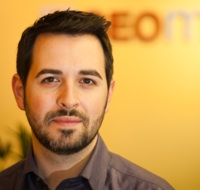 It wasn’t so long ago that “search marketing” reigned supreme. Social media and content marketing were in the distance, but their value hadn’t yet come of age. Yet, even then, digital visionaries like Rand Fishkin were assigning their own value to the online marketing trifecta we’ve referred to as “the big three.”
It wasn’t so long ago that “search marketing” reigned supreme. Social media and content marketing were in the distance, but their value hadn’t yet come of age. Yet, even then, digital visionaries like Rand Fishkin were assigning their own value to the online marketing trifecta we’ve referred to as “the big three.”
As CEO of software firm SEOmoz, arguably the leading authority on search engine optimization, Fishkin is a powerful voice helping to guide the SEO world from a technical and narrow focus on search to a much more holistic approach—one that continues to involve search but that also emphasizes social media and content, with an eye toward conversions.
Fishkin, one of our Marketers to Watch in 2012, recently shared some wisdom with us about the evolution of online marketing, the semantics surrounding it, where content marketing fits in, and marketers’ collective challenges moving forward.
We constantly see, although I hate the word, a great deal of synergy, meaning strength, in what you get when you add content, search, social, community, PR—all of these together—into one inbound marketing or organic marketing channel.
An external driver is the search engines themselves. Google and Bing have both become tremendously more social and personalized. Bing is obviously leveraging Facebook. Google is leveraging everybody’s graph. Although it doesn’t always appear that way, they are getting data from connected accounts through Facebook, through Twitter, through LinkedIn, through Quora, and obviously their own network, Google+. They’re very, very bullish on connecting these channels together and getting a better outcome than if you focus purely on SEO.
I love SEO. I always have. It has been my lifeblood professionally for years and a personal passion for years, but I also recognize how SEO has blinded me to the power of all these other marketing channels. I loved it so much that I almost let it overwhelm me.
The great power and strength of inbound marketing channels is to lower the cost of customer acquisition. Instead of paying for visitors, you are earning them.
There are a few people in the industry who don’t like the terminology “inbound marketing.” I used to be one of them, too. I thought, “I want to call it organic marketing,” which, of course, is associated with groceries. I want to make up some new names for it and, really, that’s just silly. “Inbound marketing” has a lot of traction. It’s already being promoted by lots of other organizations. It’s good terminology. In 2002, I was arguing against the word “SEO,” along with a bunch of other people: “No, we’re not optimizing search engines; don’t call it SEO.” It feels like that all over again.
A lot of SEOs were doing a ton of publishing and content in order to target keywords [before social media and content marketing rose up], a lot of them were focused on user experience and getting conversions right. They’ve been focused on social media—the early forms of social media, blogs, forums, participation in web communities—for a long time. The first social media marketers, as far as I’m concerned, are SEOs: 2003, 2004, early Digg, early Reddit, early StumbleUpon, that was all SEOs doing that social marketing. And yes, now Twitter and Facebook are big parts of this, and so is LinkedIn and People Plus, and Pinterest is coming up and Tumblr is obviously a big thing. But the fundamentals have not changed that much.
Content marketing, certainly, has been moving in the marketing world the last few years. You can see big Fortune 500s and large agencies embracing it. I think, honestly, where these folks fall down more is on the technical aspect and the analytical aspect of understanding how Google+ ripples work, how we can study [analytics] to find influencers, how to track visits and investments in social media marketing—anything to do with SEO. Those more technical aspects—the analytics and the metrics, the tactics, the creativity of how you leverage these channels—that stuff, in my mind, is being more ignored and is something that has a long way to go. It feels very brand driven as opposed to very metrics driven.
I think content marketers feel like they can create great content, put in on the Internet, and people will magically get there. And sometimes people do magically get there. The problematic part is that approach works. But, particularly for non-enterprise brands and folks who don’t have a huge megaphone, building a megaphone is a challenge, and I wish that they were a little bit more focused and invested in understanding how to do that.
Investing in the long-term is psychologically more challenging but almost always more rewarding. If you haven’t figured that out yet, you should go back to kindergarten and do it over again.
I actually think that one of the biggest challenges that we face right now is a lack of formalization and education. There is no formal education, there is no formal certification, there is not even a formal recognition. I think there is a lot of push back and anger—resistance in the industry to build anything like that. I’m not trying to build something like that. I think change is hard, and I think for people who are good at it, they don’t want to go learn something new or go prove their worth in some sort of formalized setting. I keep hoping that someone will rise up and be that leader in that education and training and certification. It’s certainly possible that will happen.

